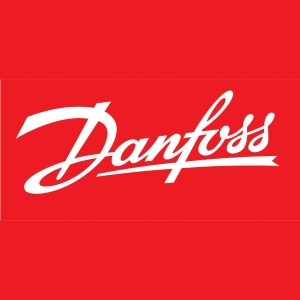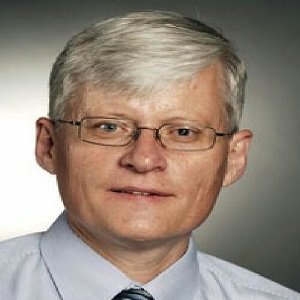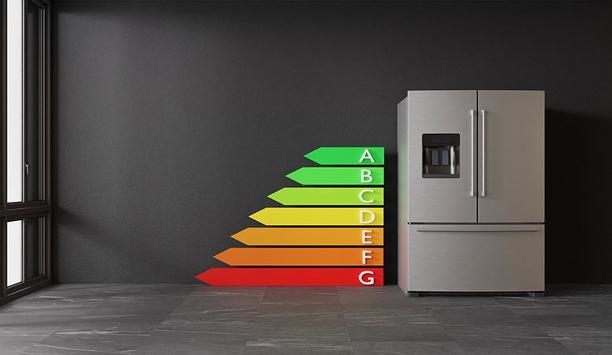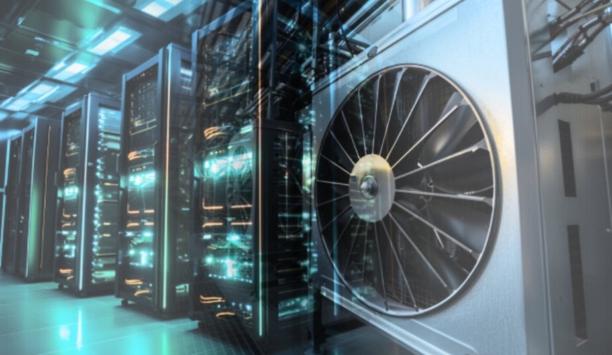Danfoss - Experts & Thought Leaders
Latest Danfoss news & announcements
In a move to strengthen their supply chain in the North American market, Danfoss Climate Solutions is now manufacturing a significant number of its GBC 45 and 49 bar shutoff ball valves in its state-of-the-art factory in Monterrey, Mexico. Previously, all GBC valves were produced in Danfoss’ factory in China, but in an effort to reduce delivery times to customers in the Americas, the company made the decision to expand production to North America. Danfoss’ resilience and flexibility The shift is part of a larger regionalization strategy to bring production of HVAC components closer to customers in the Americas by investing in local manufacturing, reducing lead times, and increasing Danfoss’ resilience and flexibility to serve North America, the largest market for Danfoss. The GBC 45 and 49 valves, designed for A1, A2L, and A3 refrigerants, are manually controlled, bi-directional shut-off valves designed for liquid, suction, and hot gas lines in refrigeration systems. Their broad temperature range allows them to be used to control the flow of refrigerant and guard against leaks in air conditioning, refrigeration, and freezing applications. Advanced manufacturing techniques Danfoss teams from around the globe worked together to replicate the manufacturing processes The valves’ rupture-proof, custom-made brass construction requires advanced manufacturing techniques. To prepare the Monterrey factory to produce the valves, Danfoss teams from around the globe worked together to replicate the manufacturing processes from China, incorporating auto-brazing, laser welding, and helium leak testing. To ensure that every GBC valve produced in Monterrey meets high standards of quality and reliability. Innovation and long-term growth "This dual production strategy for GBC 45 and 49 valves represents our commitment to both our customers and the future," said Sony Martinez, Director of Sales for Danfoss Climate Solutions in Mexico. Sony Martinez adds, "By bringing production closer to our customers in the Americas, we are strengthening our supply chain and ensuring they have access to the high-quality products they need, when they need them, demonstrating our dedication to innovation and long-term growth." Decarbonization and energy efficiency goals "As our North America customers transition to alternative refrigerants, we are seeing a growth in demand for our GBC 45 and 49 valves," said Douglas Custodio, Director of Sales Development for Danfoss Climate Solutions in North America. Douglas Custodio adds, "Expanding production to North America will enable us to meet growing demand and further assist our customers in their decarbonization and energy efficiency goals."
Forward-thinking, flexible solution designed to work seamlessly with legacy refrigerants like R-410A, as well as A2L and low-GWP alternatives—all in a single valve that helps contractors reduce truck stock and job time, while allowing wholesalers to streamline inventory and optimize shelf space. Danfoss, a pioneer in energy-efficient solutions, is proud to announce the launch of its Universal TR6 Thermostatic Expansion Valve, an innovative product designed to optimize performance across a wide range of refrigerants. Engineered for legacy R-410A systems, as well as low-GWP refrigerants like R-454B and R-32, the Universal TR6 offers HVAC wholesalers and contractors a versatile, future-proof solution that ensures efficiency, reliability, and ease of installation. New light commercial installations Universal TR6 valve is perfect for a variety of applications, from residential retrofits to retail facilities The Universal TR6 valve is perfect for a variety of applications, from residential retrofits to new light commercial installations. Its advanced design allows for seamless compatibility with multiple refrigerants, enabling contractors and service technicians to streamline inventory and simplify installations without compromising on performance. A technologically advanced enhancement of the existing TR6 product line, the Universal TR6 comes in a kit consisting of a valve, bulb strap, insulation tape, installation guide, and three connectors: chatleff, aeroquip, and flare. Key features Key Features of the Danfoss Universal TR6 Thermostatic Expansion Valve: Universal Refrigerant Compatibility: Works with R-410A, R-454B, and R-32, making it the ideal choice for both existing systems and future-proof installations. Enhanced Energy Efficiency: Contributes to long-term cost savings by optimizing refrigerant flow, reducing wear on components, and increasing system lifespan. Reduced Downtime Risk, saving maintenance costs. Simplified Inventory Management: With one valve for multiple refrigerants, HVAC professionals can reduce complexity and improve inventory management, helping to save time and costs on job sites. Needs of the modern HVAC industry Universal TR6 is designed to meet the needs of the modern HVAC industry, offering zero compromises The Universal TR6 is designed to meet the needs of the modern HVAC industry, offering zero compromises between performance, adaptability, and sustainability. As refrigerant regulations continue to evolve, this truly universal valve offers a solution that’s both adaptable to legacy and current industry standards. Refrigerant transitions “We’re excited to introduce the Universal TR6 to the market,” said Ignacio Termenon, Head of Sales Development at Danfoss. “This valve is a game-changer for the HVAC industry, offering an all-in-one solution that simplifies refrigerant transitions and enhances system efficiency, all while helping to meet sustainability goals.” The Danfoss Universal TR6 is available now for order.
Building on a successful collaboration established in 2019, Danfoss and Microsoft are expanding their partnership to accelerate the development and deployment of AI and cloud-based solutions that enable the industry to optimize energy consumption, reduce food waste, and lower emissions across food retail. Danfoss Alsense® helps supermarkets reduce food waste by up to 30%, while also reducing energy consumption on refrigeration by up to 15%. generation of sustainable solutions Danfoss Alsense is a cloud-based monitoring and management solution designed specifically for food retail businesses like supermarkets to optimize refrigeration systems. Through 24/7 monitoring, users are provided with real-time insights, enabling them to proactively minimize downtime and optimize performance, to ultimately reduce food waste and operating costs. With Danfoss’s expertise in energy-efficient technologies as a foundation and Microsoft's pioneering AI and cloud competencies as a catalyst, both are enabling a new generation of sustainable solutions for the food retail industry. Transition to a low-carbon future Integrating Microsoft's AI technology, Danfoss Alsense will become more accessible and intelligent Natalie Schnippering, Vice President of Danfoss Climate Solutions Digital Services, says: “By deepening our collaboration with Microsoft, we’re taking a significant step towards making sustainable solutions more accessible and impactful for our customers. Together, we can accelerate the global transition to a low-carbon future.” This partnership leverages AI to accelerate the achievements of shared climate goals. By integrating Microsoft's AI technology, Danfoss Alsense will become more accessible and intelligent. Together, they continue to develop and deploy joint solutions to enable faster time to market and remove barriers for customers adopting sustainable technologies. This enhanced solution will empower supermarkets to achieve greater sustainability and operational efficiency. Power of AI for a sustainable future Matt Walsh, Director Industry Advisory at Microsoft, says: "Our collaboration with Danfoss demonstrates the transformative power of AI for a sustainable future." "By leveraging AI to optimize refrigeration systems, we're helping food retailers minimize their environmental footprint. We're excited to be at the forefront of this change, empowering businesses with this transformative technology."
Insights & Opinions from thought leaders at Danfoss
The data center market has shown robust growth over the past five years, with significant increases in capacity and electricity usage. According to the International Energy Agency (IEA), global data center electricity consumption was approximately 460 TWh in 2022, and it is projected to rise to over 1,000 TWh by 2026. This growth is driven by the increasing demand for digital services and the expansion of artificial intelligence (AI) workloads. In 2025, the total capacity demand for data centers is expected to reach 82 gigawatts (GW), with AI workloads accounting for 44 GW and non-AI workloads for 38 GW. By 2030, this demand is projected to increase to 219 GW, with AI workloads making up 156 GW. This significant growth underscores the importance of sustainable practices in the data center industry. Alternative Off-Grid Power Sources To meet the growing energy demands, data centers are increasingly turning to alternative off-grid power sources. These include solar power, wind turbines, micro-hydro power, and biogas generators. These renewable energy sources not only reduce the carbon footprint of data centers but also enhance their resilience by providing reliable power in remote locations. Green hydrogen, produced by electrolysis using renewable energy, also offers a sustainable alternative to traditional cooling methods, with the potential to significantly reduce greenhouse gas emissions. Continued Compute Growth and Liquid Cooling Nvidia's use of direct-to-chip liquid cooling and closed-loop systems has shown a 300x improvement The rapid growth in compute power, particularly with the introduction of platforms like Nvidia's NVL-576 600 kW, has significant implications for data center cooling. This platform, designed for high-performance AI workloads, requires advanced cooling solutions to manage the heat generated by such dense compute environments. Nvidia's use of direct-to-chip liquid cooling and closed-loop systems has shown a 300x improvement in cooling efficiency. Google's fifth-generation cooling distribution unit (CDU), known as Project Deschutes, is another example of innovation in this space. This CDU sidecar power rack supports up to 1 MW per rack, leveraging high-voltage DC power distribution to enhance efficiency and cooling capacity. Energy-Efficient Cooling Technologies Energy-efficient cooling technologies are critical for the sustainable operation of data centers. Some of the most promising technologies include: Direct-to-Chip Liquid Cooling: This method involves applying liquid coolants directly to the processors, providing superior heat dissipation and enabling servers to operate at optimal performance levels. Hybrid Rear-Door Heat Exchangers: These systems combine air and liquid cooling to manage heat more efficiently, particularly in high-density rack environments. Heat Reuse The elevated temperatures made by liquid cooling can also be harnessed in industrial processes Liquid cooling provides an additional opportunity to reduce energy consumption while enabling data centers to become contributors to community energy systems. Unlike traditional air cooling, which disperses heat into the atmosphere, liquid cooling captures heat more effectively, allowing the heat to be repurposed for the heating needs of nearby residential or commercial buildings. Heat pumps can be employed to raise the temperature of the excess heat to the temperature required by heating systems, resulting in greater energy efficiency. The elevated temperatures produced by liquid cooling can also be harnessed in industrial processes that require specific heat levels, such as pasteurization, drying or chemical processing. By utilizing this heat, industries can reduce their reliance on external energy sources, which in turn lowers operational costs and emissions. However, most areas in the U.S. lack the infrastructure to support district heating. Significant investment is required to develop the infrastructure needed to transport and utilize the heat, such as pipelines for district heating or retrofitting industrial processes. Depending on the region, there may also be legal or regulatory barriers to overcome. Policy and Community Engagement There is strong support for AI growth, with alliances involving companies like OpenAI and Meta Within the current U.S. administration, there is strong support for AI development, with partnerships involving companies like OpenAI and Meta. OpenAI, Meta, SoftBank and Oracle have joined forces for the Stargate Project, which aims to build AI data centers in the U.S. This project includes significant investments to create infrastructure that supports AI development. The Trump administration has identified 16 sites on federal land for the development of AI data centers. These centers are intended to provide the necessary processing capacity for machine learning, cloud storage, and AI systems. Heat reuse offers a powerful tool for sustainability and community engagement. By capturing and repurposing the waste heat, data centers can significantly reduce their environmental impact while providing tangible benefits to surrounding communities and industries. This approach not only supports decarbonization efforts but also fosters stronger ties between data centers and the communities they serve, creating a more sustainable and resilient future. Benefits and integration of data centers Data centers support local economies by creating jobs, providing reliable internet services Educating the community about the benefits of data centers is crucial to ensure the successful integration of data centers into local communities. Data centers support local economies by creating jobs, providing reliable internet services, and enabling technological advancements that improve quality of life. By highlighting these benefits, data centers can build stronger community support and enhance their social license to operate. The effort should combine outreach with online educational initiatives, collaborations with industry, academia, NGOs and multiple sources of in-the-field insight. Conclusion The data center market is poised for continued growth, driven by advancements in technology and increasing demand for digital services. By focusing on sustainability, heat reuse, and energy-efficient cooling technologies, the industry can meet this demand while minimizing its environmental impact. Engaging with communities and educating them about the benefits of data centers will further support the sustainable growth of this vital industry.
As demand continues to grow for sustainable, energy-efficient solutions in refrigeration and heating, both Europe and North America are navigating a rapid transition toward natural refrigerants. There is a strong demand for new CO2 systems, including heat pumps and various other applications. Higher capacity compressors with larger operating envelope, such as Danfoss’ Bock HGX56 CO2 T series, will play a critical role in supporting this growing need. Air to water heat pumps As shown in Figure 1 and Figure 2 below, the larger operating envelope of up to 77°F and 65 bar on the suction side can improve the COP by approximately 15% for applications with higher heat source temperatures – for example, air to water heat pumps in summer conditions. Transcritical CO2 figure. Larger operating envelope of up to 77°F and 65 bar on the suction side. Figure 3 below shows a typical layout of a CO2 transcritical air-to-water heat pump for large systems, designed with features to boost efficiency. Such systems are already being built in Europe, with the largest compressor options, and used in heating capacities of up to 2.5 MW per rack. Layout of a CO2 transcritical air-to-water heat pump for large systems. Cooling and Heating Working Together Transcritical supermarket applications with heat reclaim are very suitable for improving the version Transcritical supermarket applications with heat reclaim are very suitable for improving the overall refrigeration system performance. It is a highly efficient and resilient solution that provides simultaneous heating and cooling by recycling waste heat energy within the store. More than 2,000 installations across Europe and in other parts of the world have shown that the traditional CO2 weaknesses in refrigeration applications, such as high temperatures and pressures, can be turned into profitable advantages when adding heat reclaim to the system. In fact, the operational costs can be reduced by more than 20% by replacing conventional heating sources with heat reclaim, and the pay-back time of the heat reclaim installation is typically short, less than 2.5 years. At the same time, huge carbon savings can be made when the system is installed and maintained correctly. Additional Applications Transitioning to CO2 CO2 is increasing in popularity for cold storage and food processing, due to some challenges of using ammonia in states with a large number of regulations, as well as the desire for distributed systems when expanding plants and the advent of larger CO2 compressors. Some estimates show a 10% market transition to CO2 from ammonia and HFCs for systems up to 250 tons (880 kW). An example would be a cold storage facility requiring variable temperatures with stability/efficiency at partial load for garlic processing, storage and pre-cooling. The requirements for pre-cooling are 40°C/39.20°F, but for processing and final storage, −100°C/140°F is required. CO2 System Examples Single-stage transcritical CO2 applications are used in the field of medium temperature refrigeration Single-stage transcritical CO2 applications are used in the field of medium temperature refrigeration. They can be operated very efficiently, if the high pressure is operated in the subcritical range over a long period. Using the high-pressure side, it is appropriate to use the application in the transcritical range in combination with refrigeration, due to a large temperature glide and a relatively high discharge end temperature for specific heat pumps and the heat recovery. In CO2 applications in low and medium temperature refrigeration, so-called booster systems are used. High-pressure CO2 gas from the low-temperature compressor is discharged directly to the suction side of the second compressor stage. Different plant constructions of these Booster applications are used, for example, in supermarket applications. In a cascade system, different refrigerants are used in an application. They are combined in two refrigerating circuits that are separated from each other. The high temperature stage is used as a condenser in the CO2 application. It is possible to use different refrigerants like hydrocarbons, ammonia, and HFCs like R-134A. Keys to a Successful Installation Proper oil levels, adequate space for maintenance and ventilation, environmental conditions and surface setup with sufficient load-bearing capacity are all critical initial items to consider. Once these items have been considered and addressed properly, then you need to take extreme care during the soldering - cooling the valve body during and after and only using inert gas to inhibit oxidation products. The actual required pipe cross-section must be matched to the output. The tube must be sawed at a right angle with the angular tolerance being ±10. Pipes and system components must be clean and dry inside and free of scale, swarf and layers of rust and phosphate. Only use hermetically sealed parts. Lay pipes correctly. Suitable vibration compensators must be provided to prevent pipes being cracked and broken by severe vibrations. Ensure a proper oil return and keep pressure loss to an absolute minimum. Suction and discharge should be depressurized prior to connecting to the refrigerant system. Proper layout of the suction and pressure lines directly after the compressor is integral to the smooth running and vibration behavior of the system. Oil return function To ensure the oil return function will work reliably no matter what kind of system configuration you are using, Danfoss recommends incorporating oil separators or oil level monitoring equipment. For systems with long pipes and higher degree of contamination, a filter on the suction-side is recommended. When attaching accessories with an electrical cable, a minimum bending radius of 3x the cable diameter must be maintained for laying the cable. Voltage and frequency values Compare the voltage and frequency values with the data for the mains power supply Connect the compressor motor in accordance with the circuit diagram (see inside of terminal box). Compare the voltage and frequency values with the data for the mains power supply. Only connect the motor if these values are the same compressors marked in this way are suitable for direct or part winding start. The motor winding is divided into two parts: part winding 1 = 50 % and part winding 2 = 50 %. This winding division reduces the start-up current during a part winding start to approx. 50 % of the value for a direct start. Reversed fields of rotation In the factory, as shown below in Figure 4, the motor is switched for direct starting (YY). For part winding start (Y/YY), remove the bridges and connect the motor feed cable according to the circuit diagram. The motor is switched for direct starting (YY). Failure to comply results in reversed fields of rotation and can cause motor damage. After the motor has started up with part winding 1, part winding 2 must be switched on after a maximum 1-second delay. Failure to do so can be detrimental to the service life of the motor. Ensure that power is supplied via QA2 to winding 1 (50%) (1U1/1V1/1W1) and via QA3 to winding 2 (50 %) (2U1/2V1/2W1). The motor contactors (QA2/QA3) are each to be rated for approx. 50% of the maximum operating current. Danfoss BOCK compressors Transcritical CO2 compressors, like the Danfoss BOCK product line, offer a wide span of capacities with up to 162 kW of cooling capacity (14°F/95°F/18R/60 Hz) and 420 kW of heating capacity (41°C/77°C (100 bar)/18R/60 Hz) for many different product applications, including food retail, heat pumps, district heating, industrial refrigeration and process heating, reversible chiller/heat pumps for HVAC, cold storage, chillers, and data centers. Low and medium temperature levels are available, with high stand still pressures. This high capacity reduces the need for multiple compressors, simplifying system design and reducing investment costs. The Danfoss BOCK compressors also feature a high-pressure rating of 130 bar in operation/150 bar at stand still on the high side and 65 bar in operation/100 bar at stand still on the low side.
Installing HVAC equipment is not as simple as plugging in an appliance. Installers often face many hurdles, including complex system design, space constraints, accurate sizing and load calculation, and proper ductwork installation. But what are we forgetting? We asked our Expert Panel Roundtable: What is the most overlooked factor when installing HVAC systems?



























































